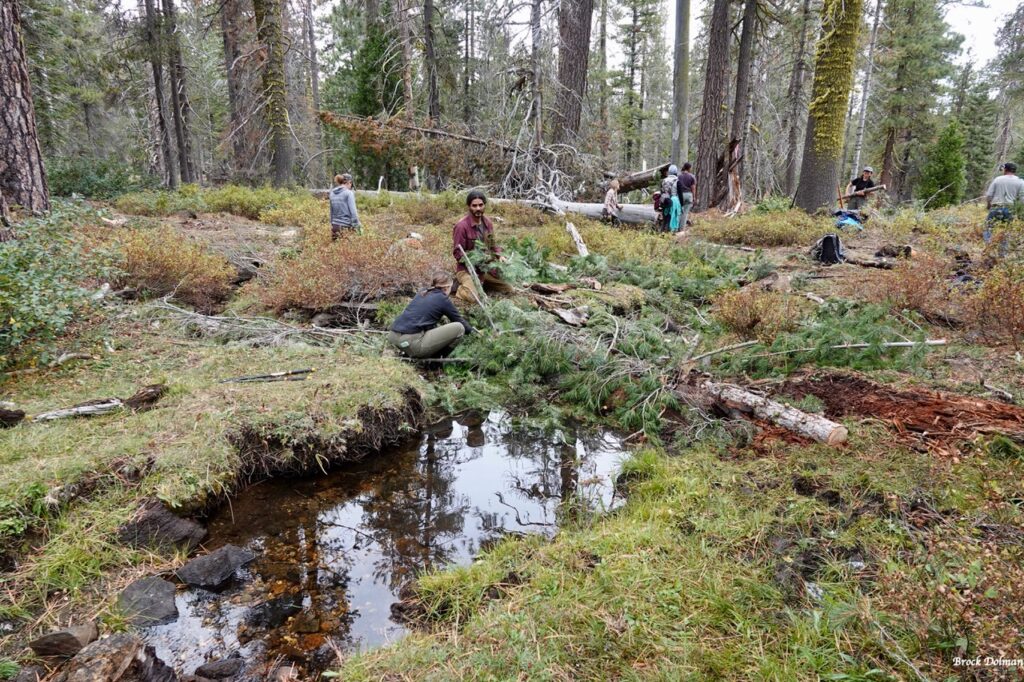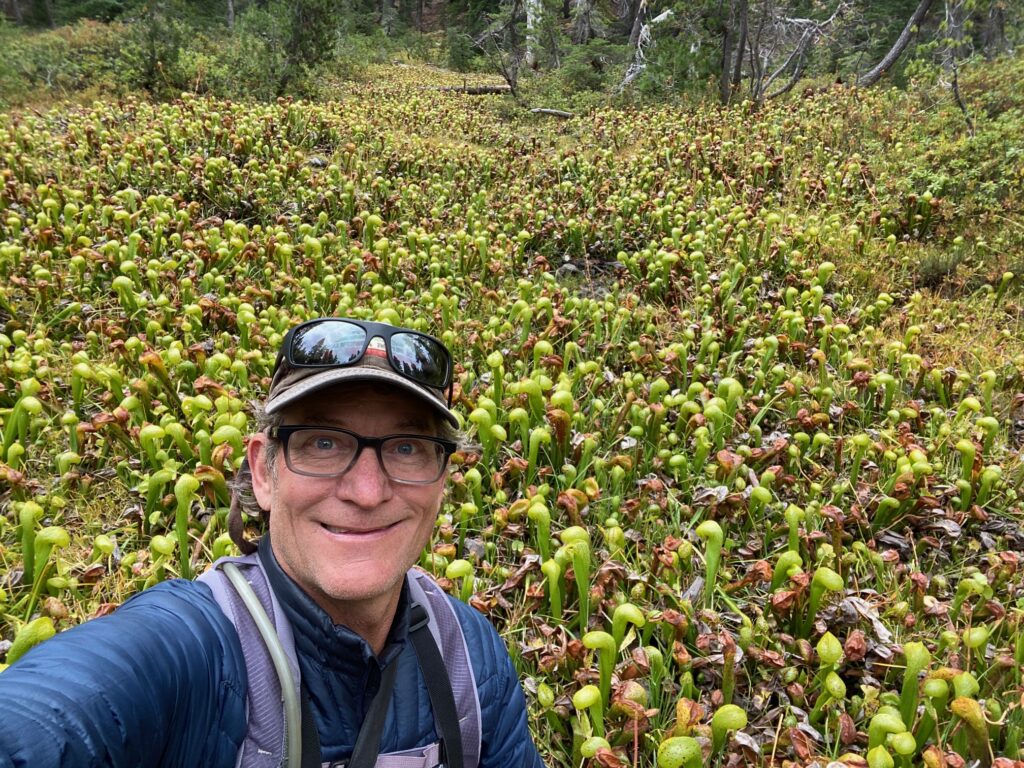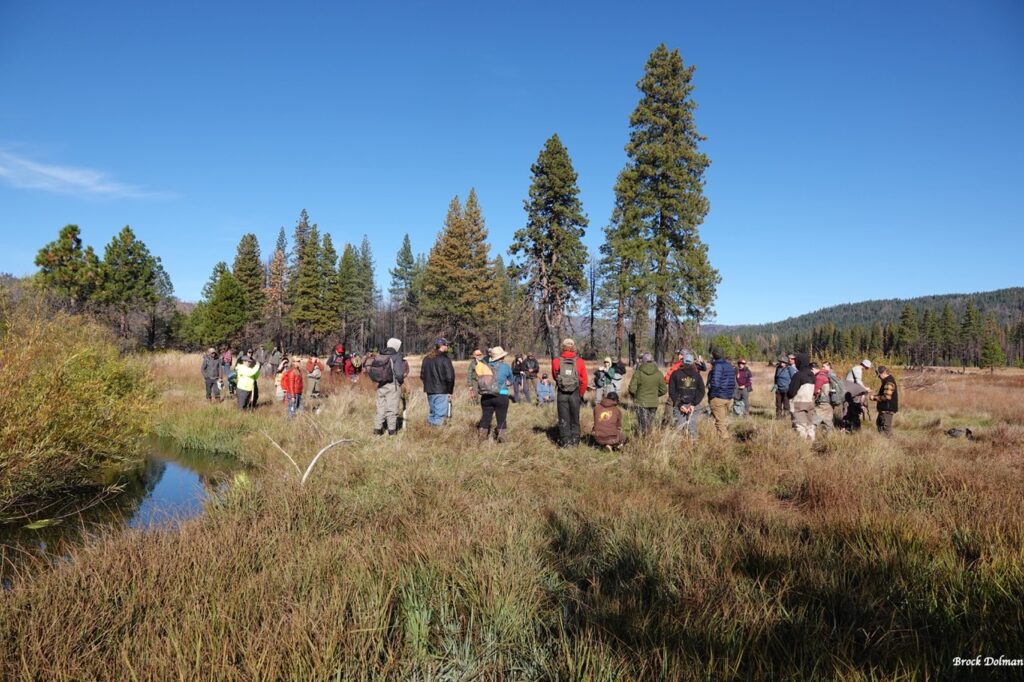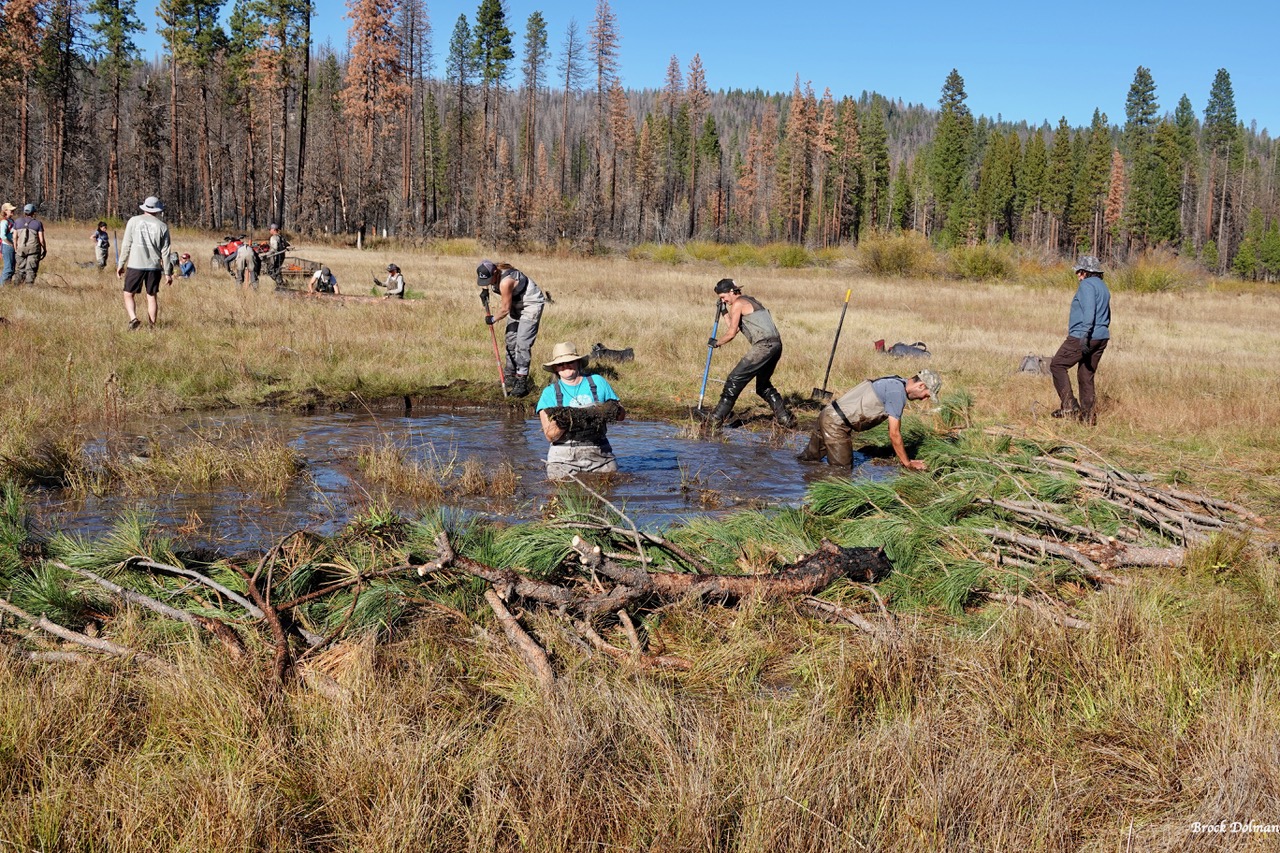We’re reporting back from two highly successful Cal PBR Network workshops that took place in October, empowering folks to further advance their skills in process-based restoration and all of its benefits. In contrast to form-based restoration, which can be expensive and reliant on fossil fuels, process-based restoration utilizes cost-effective structural enhancements, such as beaver dam analogues and post-assisted log structures, to leverage the system’s natural energy for restoration. It’s an iterative process that involves listening to and harmonizing with natural systems.
The first one, Making Meadows Matter, was led by the Scott River Watershed Council in partnership with the Cal PBR Network. OAEC was excited to be there and share information as well as help with the installation of meadow restoration treatments.
The four-day workshop took place in the Scott River Valley and was sold out at 48 participants. The enthusiastic attendees included restoration practitioners, agency and regulatory staff, tribal participants, nonprofit entities, students, and interested landowners.

Participants got an opportunity to partake in “fuels to flows” treatments using onsite materials—trees that were encroaching the meadow as well as providing fuel for potential wildfires—and transform them into structures that repair incised streams. The structures effectively split the flow of the stream to increase the wetted area of the meadow, prime habitat for peat-laden soil (which sequesters carbon when wet), and provide crucial habitat for fens, cobra lilies (Darlingtonia), and Cascades frogs. The work also helps trap sediment, helping endangered species, like salmonids, that need sediment-free gravel to spawn downstream from the meadow.

To top it off, the cobra lily seeds were perfectly ripe, and the team got to “shucking and hucking” to spread their seeds for future habitat. Overall, it was a productive and fun few days.

Also taking place the same month was the Cal PBR Network’s Build like a Beaver workshop. Hosted by the Maidu Summit Consortium and their ground crew, other partners included The Sierra Fund, Swift Water Design, Symbiotic Restoration, OAEC, US Fish & Wildlife Service, US Forest Service, and the North Coast Regional Water Quality Control Board. The workshop took place at Tásman Koyóm on Yellow Creek in the headwaters of the North Fork Feather River.

The two-day workshop saw 75 people in attendance, including resource conservation district staff, tribal entities, federal and state resource agency staff, conservation nonprofit staff, restoration practitioners, and those interested in learning how to do this kind of work.

Together, participants and practitioners installed 50 structures using materials from encroaching conifers and increased the stream length by 75%. This greatly increased the overall wetted area of the meadow, repairing the downcut stream and rehydrating precious meadow soils.
As our intern, a participant in the workshop, puts it:
“It was inspiring to see land stewards and regulators come together to do this work that has such a tangible impact on the land. Within eight hours, using simple, low technology techniques, we were able to double the creek capacity. Seeing the tangible fruits of our labor was immensely rewarding. This work and associated movement inspire hope.”
Gavi Berman, OAEC Intern
We are proud to be a part of the Cal PBR Network and are hugely grateful for all of the enthusiasm surrounding these two workshops.






